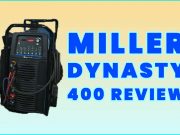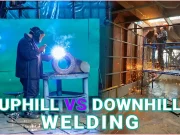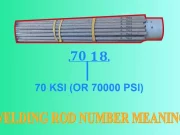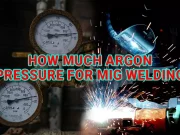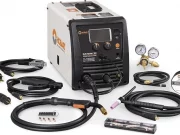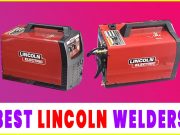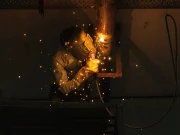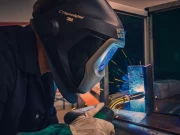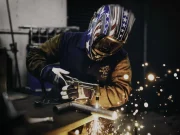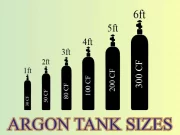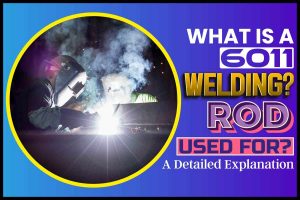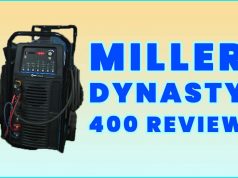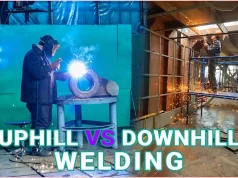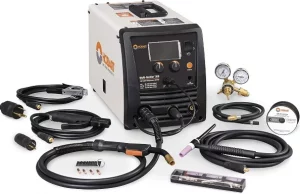A welding rod is a general name for electrodes used to join two base metals when carrying out shielded metal arc welding (SMAW).
The electrode is a metal wire coated with a chemical substance. There are different kinds of welding rods. The properties of each type will determine the kind of jobs welders can use them to perform.
The 6011 welding rod is one of the most common welding rods in the market. Continue reading for in-depth information on this topic.
What Is The Use Of The 6011 Welding Rod?
The 6011 welding rod is a general-purpose welding rod. It is made entirely of iron. Welders also use it to weld materials that require deep penetration.
Its iron make-up makes it suitable for welding iron and mild forms of steel. As a general-purpose rod, you can also use it for a variety of welding jobs.
What Is A 6011 Welding Rod?
The 6011 welding rod is a typical “fast-freeze” stick electrode used for general-purpose welding.
Another name for it is the E6011 electrode. You might be wondering what the digits 6011 stand for.
The first two digits (60) indicate the weld’s tensile strength in pounds.
What does this mean? When you use a 6011 welding rod to weld, the final weld will have a tensile strength of 6000 pounds.
The third digit (1) indicates the positions in which you can use the rod. In this case, “1” means the rod is suitable for use in all places – horizontal, vertical, flat and overhead.
The last two digits (11) indicate the type of flux coating used. In this case, the flux coating used is cellulose potassium.
An electrode’s flux coating determines the type of current that can work on the rod.
The cellulose potassium coating of the 6011 welding rod enables it to work with AC, DC and DC+ systems.
What Are The Qualities Of A 6011 Welding Rod?
The 6011 welding rod has the following properties.
- The 6011 welding rod can penetrate rust, paint, dirt and other surface contaminants. So you do not need to clean the surface of the materials you want to weld together.
- The 6011 welding rod can work with the three current types: AC, DC, and DC+. So as a welder, you can switch between any currents when the need arises.
- You can use the 6011 welding rod to join flat, horizontal, vertical and overhead welds.
- The 6011 welding rod is a fast freezing electrode that leaves a solid bead after welding.
- The 6011 welding rod has deep penetrating power, offering broader and deeper weld coverage. Therefore, it produces a much larger fused area as well as a stronger bond.
What Are The Other Uses Of The 6011 Welding Rod?
The 6011 welding rod is suitable for welding materials that require deep penetration, like iron and mild forms of steel.
However, due to the properties stated above, you can use this welding rod for various types of work.
- Welders use the 6011 welding rod for repairs and fabrications
- You can use this welding rod to weld pipelines that have large diameters.
- You can also use it to weld greasy and corroded steel.
- You can use it to weld sheet metals with low silicon deposits.
- It is also suitable for welding the body of automobiles and farm equipment made of steel.
- You can also use 6011 welding rods to build ships, bridges, railroads, cars, badges, pressure vessels, and storage tanks.
How To Properly Store The 6011 Welding Rod
The best way to store the 6011 welding rods is to keep them in their original packaging material.
Doing this would prevent them from being exposed to moisture.
Although the 6011 welding rods are not easily corroded by moisture, keeping them in a moist free environment can increase their lifespan.
You can also store them in a metallic toolbox. You can hang this toolbox on a wall in a vertical position.
The Polarity Of The 6011 Welding Rod
A welding rod forms an electric circuit when you turn it on. The electric circuit will have a negative or a positive pole. We refer to this property as polarity.
Polarity affects the strength and quality of your weld. So you have to choose the correct polarity to use.
One advantage of the 6011 welding rod is that it can work well with any polarity because of its flux coating.
The cellulose potassium coating on the 6011 welding rod makes the rod adaptable to any current.
Let us consider the types of polarity welding.
DC- or straight polarity welding:
This is performing arc welding with a direct current where the negative terminal is the welding rod.
DC+ or reverse polarity welding:
This is the process of performing arc welding with a direct current using the welding rod as the positive terminal.
Alternating Current (AC) polarity welding:
This is performing arc welding with an alternating current.
Amperage settings of the 6011 welding rods:
The 6011 welding rod comes in various diameter sizes. The diameter of the rod ranges from 3/32 to 1/4 of an inch.
The amperage size of the 6011 welding rod increases with an increase in its diameter.
We can demonstrate this phenomenon with the following examples.
A 1/8 diameter rod needs 90 to 140 amps to weld horizontally; while a 3/16 diameter rod would need 160 to 195 amps.
The welding position is another determining factor for amperage.
A 3/16 electrode would require an amperage of 160 to 180 on a vertical welding position. However, when in an overhead place, the same electrode would need a 140 to 180 amp.
Before you set amperage, remember to check the recommended settings for your welding machine.
Advantages Of The 6011 Welding Rod
The following are the advantages of using the 6011 welding rod.
- The 6011 welding rod can work with any current: AC, DC and DC+.
- The 6011 electrode can penetrate contaminants. So you do not need to clean the surfaces before you begin welding.
- The 6011 welding rod has high penetrating power. Welds fuse properly with this rod’s more extensive and more in-depth coverage.
- Due to the fast freeze property of the 6011 welding rod, it can weld in any position. The weld readily solidifies and so does not shift or flow.
Drawbacks Of The 6011 Welding Rod
Below are some of the disadvantages of the 6011 welding rods.
- The 6011 welding rods leave ripples behind and give a rougher finish. Hence, welds produced using the 6011 welding rods do not appear aesthetically pleasing.
- When you make fillet welds with 6011 welding rods, the welds produced are prone to cracking.
To solve this problem, use a slower cooling rod or weld twice when using fillet welding.
- The 6011 welding rods are not ideal for welding sheet metals due to their high penetrating power. The rods easily boreholes on sheet metals because of this property.
- 6011 welding rods are not also ideal for use on stainless steel and non-ferrous materials like aluminum, copper and titanium. The welding rods do not work on these materials.
- Due to its fast freezing property, novice welders may find it challenging to use the 6011 welding rod. You will need to weld as fast as it cools and solidifies to do a good job.
Alternatives To The 6011 Welding Rods
There are cases where the 6011 welding rod is not available or not suitable for the material involved.
There are other alternatives to choose from, which depends on their properties and the nature of the welding job.
The 6010 welding rods:
The 6010 rod is also a fast freezing rod as it deposits molten metals that solidify in no time.
A skilled welder will have to handle appropriately as the weld solidifies to produce a good quality weld.
The 6010 rod is also another general-purpose rod that welds in all positions. It is, however, more efficient in vertical and overhead positions.
Although it is easy to control, the rod’s deposition is not highly rated.
The main advantage of using the 6010 rods is their deep penetrating power. Also, you can use the rod on painted, galvanized and unclean surfaces.
The 6012 welding rods:
The 6011 welding rods also have a fast freeze property.
They are also general-purpose rods that can weld in all positions.
However, the 6012 welding rods do not have the high penetrating powers of the 6010 and 6011 welding rods.
As a result, you can use them on sheet metals and other low current applications.
The 6013 welding rods:
This welding rod is similar to the 6012 rods.
The significant difference between them is that the 6013 welding rods are easier to handle. The 6013 welding rods also produce welds with a better aesthetic appearance.
The 7024 welding rods:
The 7024 welding rods are also fast-filling rods as they deposit metals rapidly.
This welding rod has a shallow arc penetration and is suitable for high-speed welding on flat or horizontal surfaces.
Conclusion
A welding rod is a general name for electrodes used to join two base metals when carrying out shielded metal arc welding (SMAW).
The 6011 welding rod is one of the most common welding rods in the market. It is a general-purpose welding rod.
Welders use the 6011 welding rod to weld materials that require deep penetration. It can work with any current: AC, DC or DC+.

